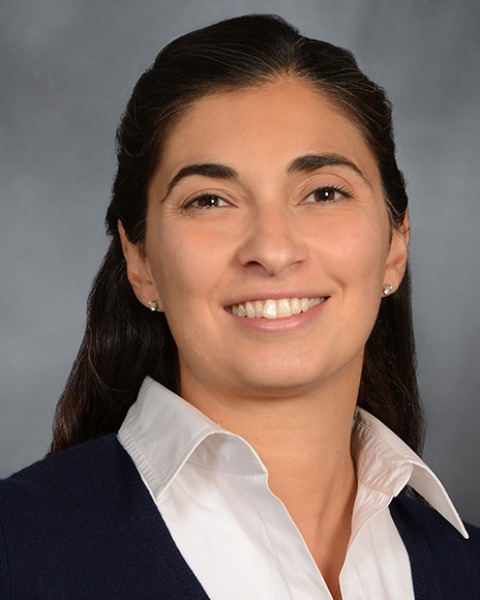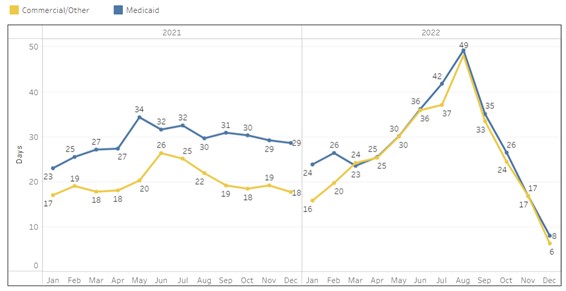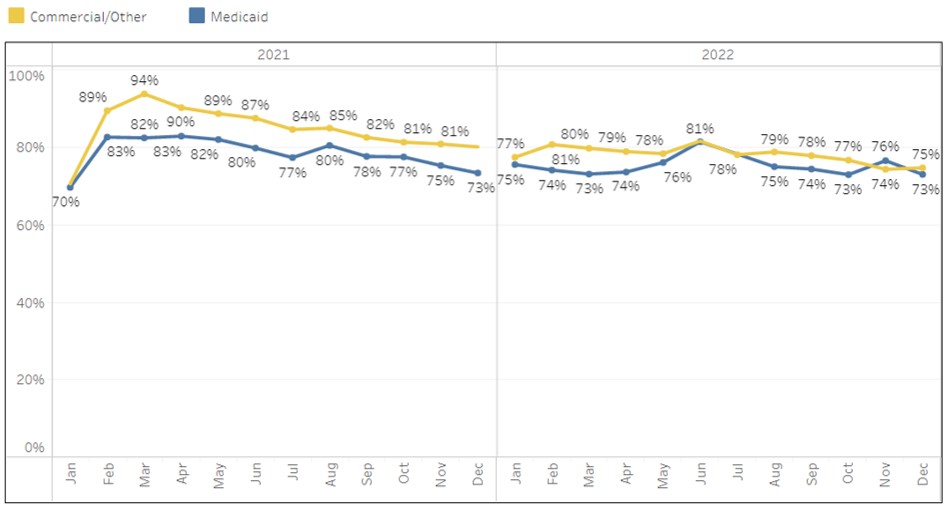Health Equity/Social Determinants of Health
Health Equity/Social Determinants of Health 4
432 - Improving Healthcare Access Disparities Through Subspecialty Practice Unification
Publication Number: 432.219

Kalliope Tsirilakis, MD (she/her/hers)
Assistant Pro
Weill Cornell Medicine
Manhasset, New York, United States
Presenting Author(s)
Background: The Pediatric Multispecialty Practice in our academic institution was historically separated from the Medicaid Subspecialty Clinics because of New York State Medicaid reimbursement and operational regulations. This separation led to disparities in access to care for our Medicaid and commercially insured patients. After the healthcare disparities highlighted by the COVID-19 Pandemic, it was decided by our Pediatric Department to unify the subspecialty practices in January 2022 to provide more equitable care to our pediatric patients.
Objective: To improve access to care for all pediatric subspecialty patients, regardless of insurance status.
Design/Methods: In January-March 2022 all subspecialty clinics from our Medicaid based practice were integrated into the multispecialty practice location. A data dashboard was created with support from the New York Presbyterian Dalio Center for Health Justice to track metrics related to health equity, including access to care, connectivity, insurance status, and race and ethnicity.
Results:
Prior to unification in 2021, Medicaid insured patients had an average lead time to a new patient visit of 29days, compared to 19.9days for commercially insured patients. After unification was complete in March 2022, this disparity in access to care was eliminated with a convergence of both lead times (Figure 1). This lead time initially increased to a peak of 49days by August of 2022 with staffing shortages, but rapidly declined for both groups in the last quarter of the year to 6-8days.
Similarly, patient connectivity disparities were essentially eliminated by the unification. In 2021, Medicaid insured patients had an average rate of patient portal activation of 79%, while commercially insured patients had 86% connectivity rates. In 2022, the overall connectivity rate dropped slightly. However, the Medicaid vs commercially insured rates again converge, 75% vs 78% respectively (Figure 2). Documentation of race and ethnicity has not changed significantly from an average of 72% despite practice unification.
Conclusion(s): Subspecialty practice unification to include both Medicaid and commercially insured patients has helped to eliminate disparities in access to care and improve timeliness to care for all pediatric subspecialty patients. Going forward, improving race and ethnicity documentation will allow us to examine the effect our practice unification has had on racial disparities in care as well. We hope that our positive experience with practice unification will influence other departments to abandon the traditional clinic model and provide more equitable care.

